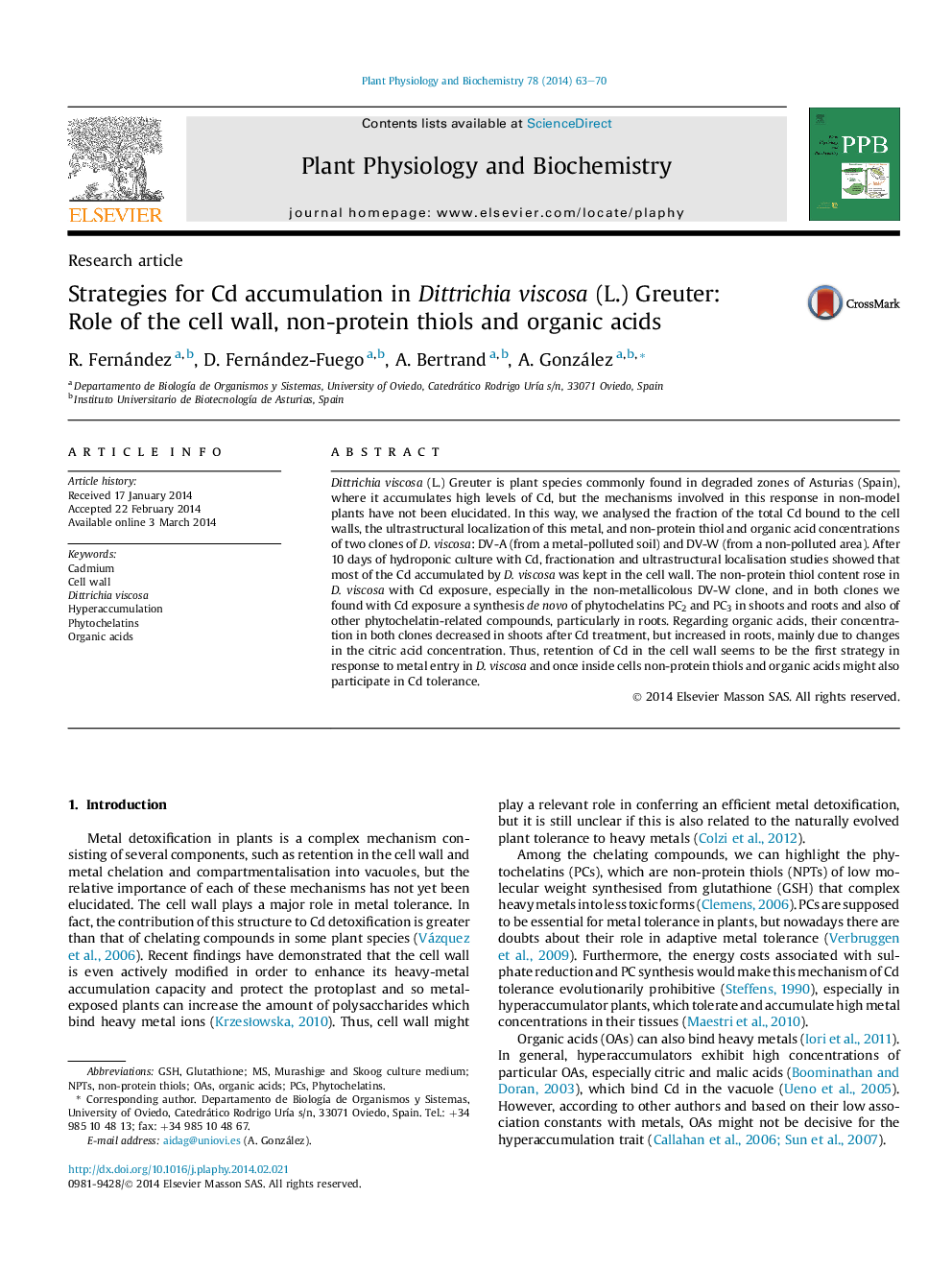| Article ID | Journal | Published Year | Pages | File Type |
|---|---|---|---|---|
| 2016198 | Plant Physiology and Biochemistry | 2014 | 8 Pages |
Abstract
Dittrichia viscosa (L.) Greuter is plant species commonly found in degraded zones of Asturias (Spain), where it accumulates high levels of Cd, but the mechanisms involved in this response in non-model plants have not been elucidated. In this way, we analysed the fraction of the total Cd bound to the cell walls, the ultrastructural localization of this metal, and non-protein thiol and organic acid concentrations of two clones of D. viscosa: DV-A (from a metal-polluted soil) and DV-W (from a non-polluted area). After 10 days of hydroponic culture with Cd, fractionation and ultrastructural localisation studies showed that most of the Cd accumulated by D. viscosa was kept in the cell wall. The non-protein thiol content rose in D. viscosa with Cd exposure, especially in the non-metallicolous DV-W clone, and in both clones we found with Cd exposure a synthesis de novo of phytochelatins PC2 and PC3 in shoots and roots and also of other phytochelatin-related compounds, particularly in roots. Regarding organic acids, their concentration in both clones decreased in shoots after Cd treatment, but increased in roots, mainly due to changes in the citric acid concentration. Thus, retention of Cd in the cell wall seems to be the first strategy in response to metal entry in D. viscosa and once inside cells non-protein thiols and organic acids might also participate in Cd tolerance.
Keywords
Related Topics
Life Sciences
Agricultural and Biological Sciences
Plant Science
Authors
R. Fernández, D. Fernández-Fuego, A. Bertrand, A. González,
